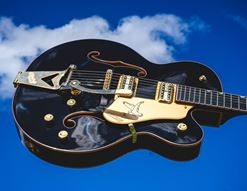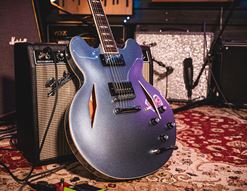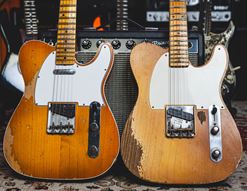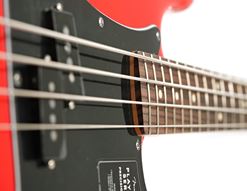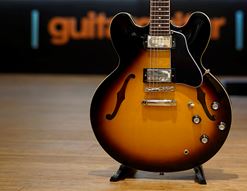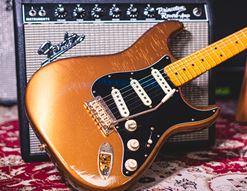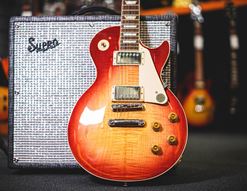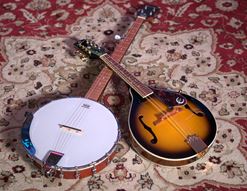How much difference does a coat of varnish make to an electric guitar?
That’s what I aim to explore today. Certainly, it’s a big enough debate to warrant a dedicated blog, because guitarists have strong opinions on the subject!
Polyurethane and Nitrocellulose are the two main types of finish, and it’s those that I’ll focus on today. I’ll look superficially at what each finish is, but I’ll dive deeper into what those finishes do and don’t do for your guitar. I personally own guitars with each of these finishes, so it makes sense for me to discuss this topic with you. Come along for the ride, why don’t you?
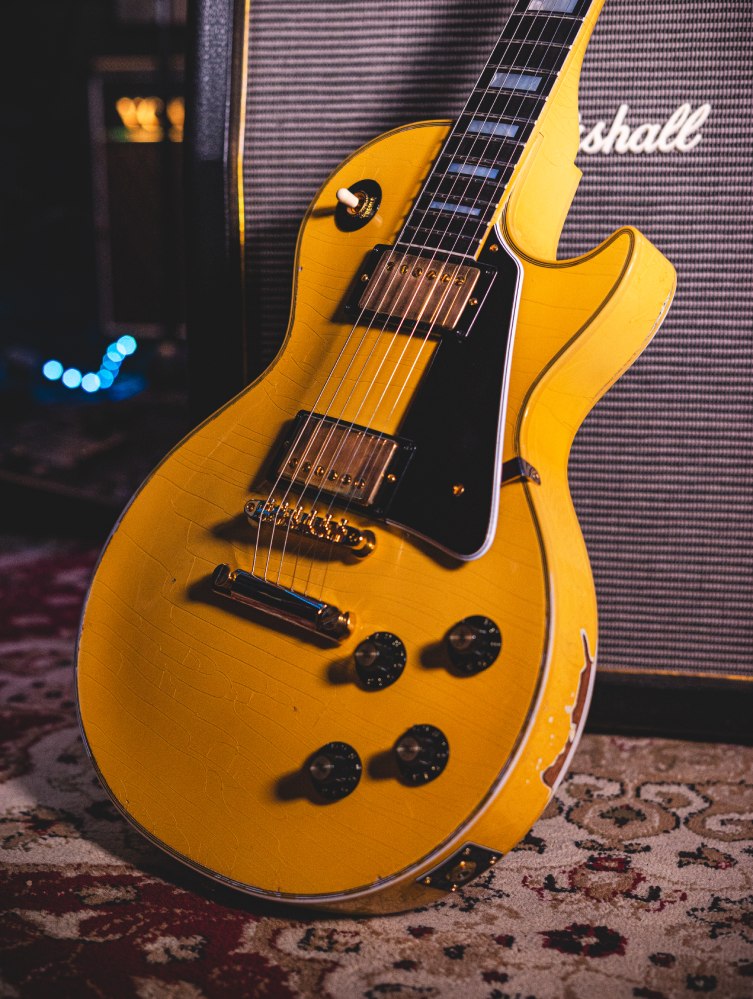
Nitrocellulose is seen as being more beautiful the more it ages, as shown on the finish of this Gibson Les Paul Custom, where the desired look has actually been created from new by the company's Murphy Lab department, who specialise in artificial ageing.
Contents
Does Nitro Sound Better Than Poly? Accepted Wisdom
Nitrocellulose = Gunpowder
I’ll begin with nitrocellulose, since it’s the older of the two types. Nitro, as I’ll refer to it henceforth, is a solvent-based clear coat lacquer that has been used in instrument making for well over a century. It’s a mixture of nitric esters of cellulose, which I believe is something to do with exposing cellulose to nitric and sulphuric acid, but I’m no chemist! But I can tell you that this compound is one of the main ingredients in modern day gunpowder!
Yes indeed, nitro is highly flammable and explosive, and for that reason, it’s dangerous to handle.
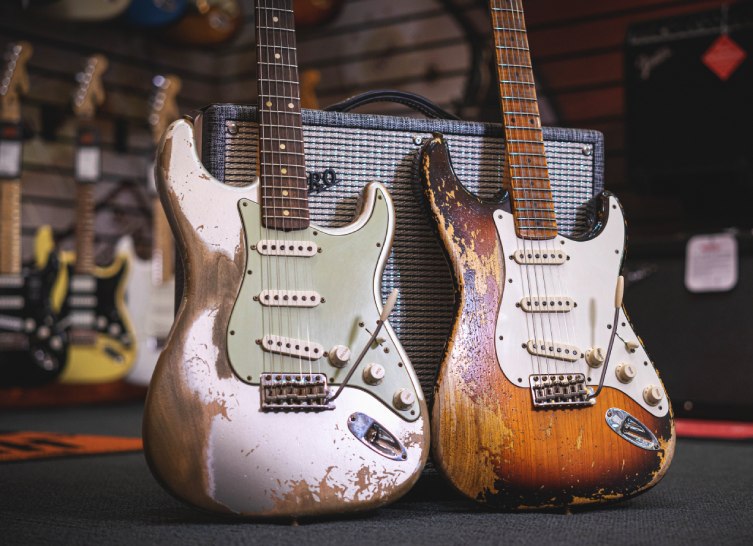
More 'aged on purpose' nitrocelloluse finishing on these Fender Custom Shop Stratocasters. This type of relic work is significantly more diffiuclt to acheive with polyurethane finishes, not to mention the fact that it is unrealistic to expect this from a poly finish!
So, why is nitrocellulose used in guitarmaking? Well, one clue to its initial use would be the automobile industry. DuPont, who made a ton of car paint colours that were adopted by guitar brands (Daphne Blue, Seafoam Green, Fiesta Red etc: all DuPont car colours) also produced a clear coat lacquer made from nitro. It stands to reason that companies like Fender and Gibson got their lacquer from the same companies who supplied their colours!
Nitro has a natural halflife, so it decomposes slowly after a number of years. Now, this means that it is - on paper at least - emitting flammable chemicals, but it’s so gradual and small that it’s not a safety concern. Indeed, the gradual erosion of nitro is seen as a particularly beautiful thing to guitarists, as the finish yellows and cracks with age. You could argue that it’s not actually doing a very good job as a protective finish, but aged nitro does look amazing, let’s be honest!

Both of these Gibson SGs are finished in nitrocellulose, despite the 'satin' look of the one on the right.
The thin nature of nitro finishes means that lots of players believe that it allows the wood to ‘breathe’ more, and therefore resonate better. There’s no doubt that wood continues to expand and contract, so a finish that facilitates this seems to be a good idea.
Nitro Pros
- Easy to apply
- Thin coats can be achieved, so building layers is simple
- Ages in a way that is considered beautiful
- Is easy to remove from a guitar (due to high solvent content which can be re-dissolved) for repairing and refinishing
- Reputed to allow guitars to sound better due to freedom of timber movement/resonance
Nitro Cons
- Extremely flammable, so particularly dangerous to work with
- Due to fumes and explosive qualities, requires a dedicated work space
- Requires many coats, so is a time-consuming job
- Collects dents and scratches very easily
Polyurethane
Polyurethane finishes - poly, for short - came into prominence in the late 1960s. This solvent-based clear coat resin varnish was introduced as both a cost-cutting measure (it is significantly cheaper to buy than nitro) and as an attempt to offer a stronger, more resistant guitar finish.
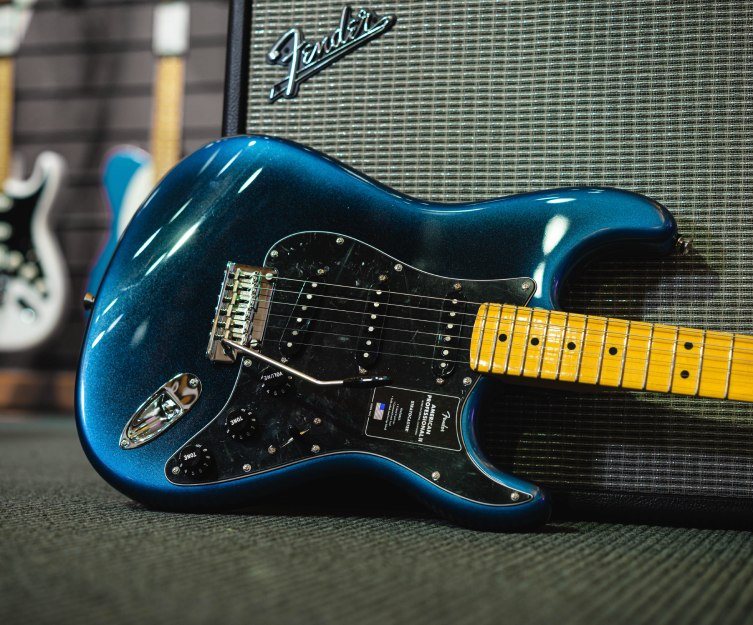
Fender's American Professional II range of guitars use polyurethane for their finishes.
Poly finishes are definitely more durable and damage-resistant than nitro. To make the point somewhat bluntly, the Ronseal that you’d use on your garden furniture and front door is a poly finish! Polyurethane finishes are what those in the industry call ‘reactive’ finishes, because their main parts cure chemically, forming what is essentially a ‘plastic’ finish. Unlike nitro, poly finishes, once cured, cannot be re-dissolved, since the reactive finish that has formed is very tough and has no ‘spaces’ between the molecules, as it were.
It’s also much more resistant to ‘polymer degradation’, which in layman’s terms means that it’ll stay how it is for decades and decades without showing any yellowing or signs of ageing.
Poly Pros
- Very tough, hard-wearing finish
- No colour degradation/discolouration in terms of ageing
- Can be applied quickly
- Easier to buff to a glossy finish
Poly Cons
- Thick-strong finish is very difficult/time-consuming to remove for repairs and refinishing
- People who like ageing/natural colour-change in their guitars won’t get on with poly finishes.
- Perceived to feel less pleasingly tactile than nitro
- Percieved to inhibit guitar’s tone due to thickness and ‘lack of movement’
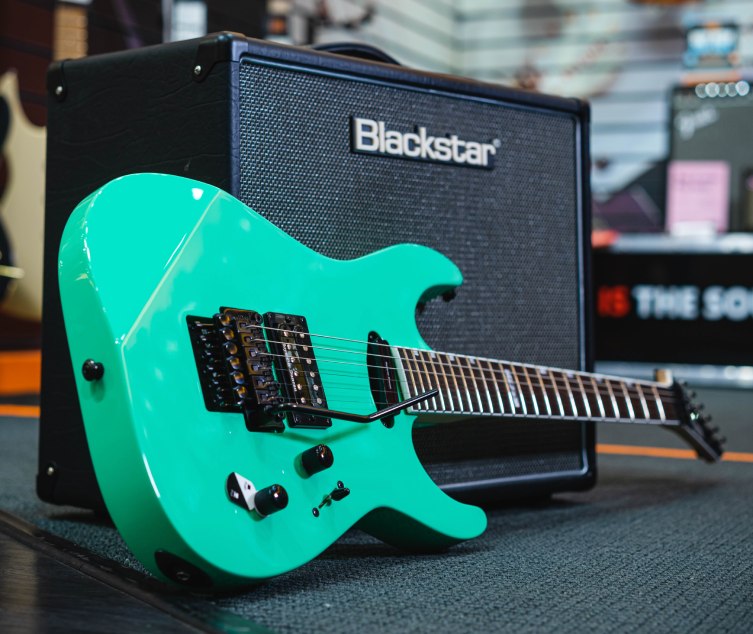
This ESP LTD Mirage has a poly finish, as you'd expect from an 80s metal machine!
Does Nitro Sound Better Than Poly? Accepted Wisdom
With the greatest respect to every opinion in the world of guitars, a great many of us take on points of view without giving them much thought.
In terms of today’s subject - nitro vs poly - many people speak negatively about poly finishes as being ‘like plastic’ and indeed, I used that term earlier to describe its tougher, more resilient resin-like aspect. But did you realise that nitro is a plastic finish, too? It’s actually one of the oldest types of plastic out there, so it’s a falsity to claim that one is ‘plastic’ and not the other.
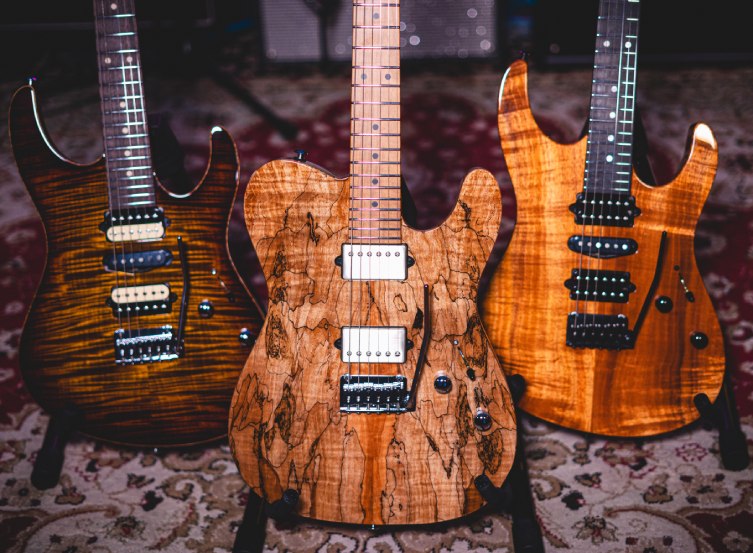
Suhr actually use both types of finish on their guitars, depending on the Series. You can feel the difference, but can you hear it?
Now, does one type of finish affect the tone more than another? This is a potentially thorny subject, and is particularly susceptible to the ‘accepted wisdom’ of guitar lore. I’m talking specifically about electric guitars here, remember. With that in mind, let me be bold and answer the question frankly:
Does a guitar’s finish have a discernible effect on the guitar's tone?
No, not really.
There are lots of factors that will affect the tone of a guitar to a greater or lesser degree. Generally speaking, it’s a bit like this, from ‘very significant’ down to ‘not much of an affect at all’:
- The amplifier: by far the biggest factor. If you don’t think of your amp as an instrument, you should!
- The player/fingers: so much nuance does come directly from the player’s fingers.
- Pickups: they are a major part, but less of the be-all-and-end-all compared with the amp.
- Guitar body style/woods: again, it plays a part, but not as much as some believe. It’s actually more about the right combination of woods matched with the right pickup.
- Pick: it’s more significant that you think: thicker picks sound less bright. They also influence how you play in major ways, but that's another subject!
- Cables: every foot of cable robs your signal of strength.
- Strings: this can matter more and less depending on factors like your playing style and the sound you’re going for.
Somewhere way below these factors, you’ll find ‘guitar finish’. It just doesn’t seem to bear a discernible difference outside of the player’s own subjective experience. Put it this way: can you tell, just from listening to a guitar on any given hit song, whether the guitar used in the recording has a nitro or poly finish?

Nitrocellulose is used on this vintage reissue Gibson Hummingbird. The thinner lacquer coats can conceivably make a difference ot the tone here, since the top can vibrate more freely.
I’d add a caveat that, on an acoustic guitar, things are significantly different. This is because the tone of an acoustic relies in a big way on the top being able to freely resonate. Lighter finishes like nitro are more conducive to this, whereas thicker, more solid poly finishes tend to inhibit that.
But on an electric guitar? I readily accept that notion that it affects the feel of the guitar, and indeed its look, but I’m not going for it in terms of sound. There are pros and cons of each finish, as detailed above, and nitro is more expensive to work with, but I wouldn’t expect it to improve the sound of a guitar.
Disagree? Let us know!





